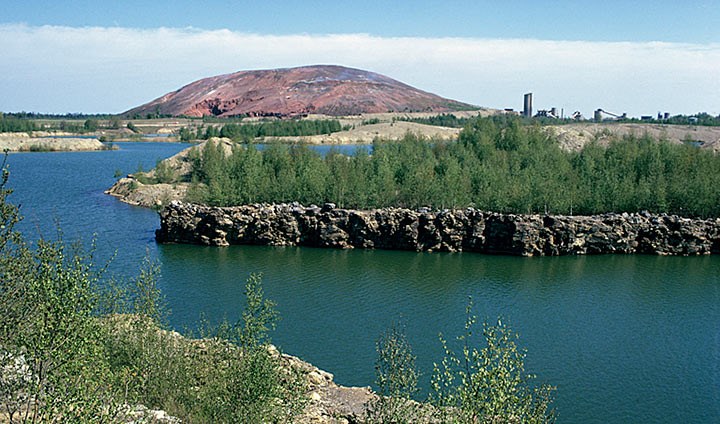Water-dwelling insects transport high levels of PFAS chemicals to land-based insects

In central Sweden and just outside of Kumla, lies the industrial area Kvarntorp. Its water-filled open pits contain high levels of PFAS, highly fluorinated chemicals.
The high levels of PFAS chemicals in lakes and ponds pass through the food chain when land-based insects feed on water-dwelling insects.
“These results show that water pollutants do not stay there, but also affect wildlife on land”, says Alina Koch, researcher at Örebro University.
PFAS, or per- and polyfluorinated substances, is a collective term for some 5,000 identified chemicals, all man-made. All are difficult to break down.
PFAS are used in a variety of areas: in clothes to protect against grease spots, dirt and water as well as in firefighting foam, cleaning products, building material and smartphones.
Sweden’s largest source of pollution is firefighting foam. Other sources are treatment plants, waste incineration and leakage from landfills.
There is evidence that a few PFAS present a health hazard as reproductive toxins and suspected carcinogens. According to the Swedish Chemicals Agency, there is adequate data to establish that all PFAS substances are harmful to health and the environment.
Source: www.kemi.se
In her doctoral thesis in environmental science at Örebro University, Alina Koch has studied how freshwater insects transport highly fluorinated chemicals called PFAS to land-based insects. Currently, there is little research on this process – that PFAS can pass through the food chain as one animal feeds on another.
PFAS is the collective term for the thousands of man-made chemicals that are abundant in clothes, make-up and other everyday products. PFAS chemicals do not break down in nature, and certain PFAS are suspected of causing cancer. Since the use of PFAS is so common today, these chemicals exist in environments across the globe.

Alina Koch has studied how PFAS transfer from water-dwelling insects when they are prey for land-based insects. One example is mosquitos, which are eaten by spiders. Other animals like birds, amphibians and bats, eat insects which began life in water, like dragonflies.
She has primarily studied this in two places, Kvarntorp outside of Kumla in central Sweden and Ronneby Airport, on the southeast coast of Sweden. In Kvarntorp, the surrounding nature has been affected by various industries since the 1940s, which have leaked and are still leaking chemicals to the water-filled open pits nearby. In Ronneby, the Swedish air force has trained fire-extinguishing using firefighting foam containing PFAS, having done so over a very long time. The practice has resulted in large amounts of the highly fluorinated substances leaking out.
“PFAS concentrations in Ronneby are thirty times the Swedish emission standards for drinking water. In the surrounding waters in Kvarntorp, the levels are three to ten times higher. PFAS levels found in insects from Kvarntorp are the equivalent to point source pollution in other parts of the world. At the same time, concentrations in Ronneby are much higher,” explains Alina Koch.
More knowledge about the “forever chemicals”
The study shows very high PFAS levels in aquatic insects collected in 2017 three meters from the water in Kvarntorp. In total, it amounted to over 100 milligrams. Levels of PFAS pollutants are normally measured in nanograms, where one milligram is equal to one million nanograms.
Alina Koch views her thesis as contributing to the knowledge about how PFAS impacts the environment, animals and humans.
“Since PFAS exist all over the world, they are called ‘forever chemicals’ as they do not break down. A follow up to my study will be to study the remaining food chain. What happens after insects are eaten by snakes, lizards, amphibians, birds, bats and mammals? Perhaps PFAS accumulate in the food chain impacting humans too.”
Alina Koch also recognises that her results may provide a starting point for reducing the effects of local PFAS emissions.
Text: Maria Elisson
Photo: Maria Elisson and Wikimedia Commons
Translation: Jerry Gray
